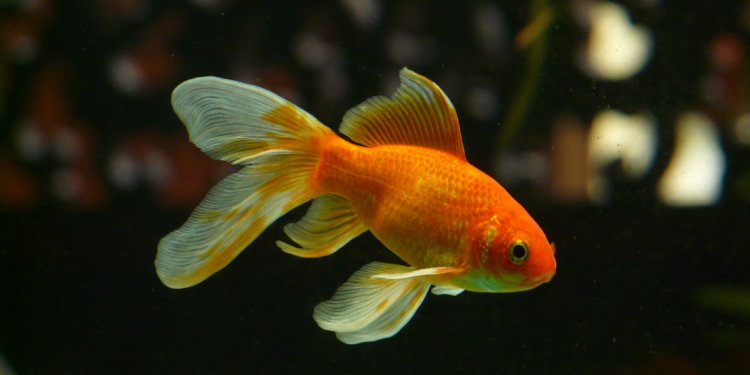Goldfishes are one of the most resilient types of fish known to humankind. They can live longer than other fish normally do thanks to a few unique traits they possess. Can a goldfish live in alcohol?
If you ever hear someone saying, “Do you know how long I have had this fish for?” don’t be impressed immediately. While this may be a long lifetime for fish according to you, it is quite normal for goldfishes. You are lucky they don’t speak, or else they would’ve told you not to brag about the wrong fact.
How long do fishes normally live?
Depending upon the type of fish, these amphibians may have a lifetime of 60 years or more. Normal tropical fish have a life span of 3 to 5 years, while goldfish are among those that may live up to 20 years.
Here are a few common fish and their lifetime:
| Killifish | 2 years |
| Bettas | 5-6 years |
| Siamese fighting fish | 2-5 years |
| Common carp | 20 years |
| Northern Pike | 7-10 years |
| Mahi Mahi | 3-4 years |
| Weis Catfish | 60 years |
| Goldfish | 20 years |
How a goldfish can live this long
Technically, a goldfish may or may not live as long as two decades. Scientists have been studying the phenomenon of living fish and their survival in the wild since the 1980s and have made this discovery: Goldfishes turn the lactic acid of their bodies into alcohol to stay alive.
This means that a goldfish will survive in alcohol. In fact, it will produce its own alcohol as a means of staying alive.
Why do goldfish produce alcohol?
According to many pieces of research, goldfish break the carbohydrates present in their bodies when exposed to harsh environments such as icy cold water to live in. Usually, this icy cold water does not contain the oxygen needed for survival. Had it ever been a human placed in water with no oxygen, it would not have lasted even a few minutes.
However, goldfish can live up to five to six months without oxygenated water due to this trait of theirs. Moreover, the process isn’t that simple.
How do goldfish produce alcohol?
When goldfishes break down their carbohydrates to survive, they turn into lactic acids. The body of a goldfish can not cope with lactic acids that will eventually cause its death. To avoid this, the goldfish further turns this lactic acid into alcohol which helps them survive in icy cold waters.
Researchers state that goldfish have two sets of enzymes that help with the metabolization of carbohydrates. One set is the basic one every other species has as well that channels the carbohydrates to the mitochondria, the power plant of a cell. Unfortunately, these carbohydrates produce lactic acids which goldfishes cannot live with.
Here is where the second set of enzymes comes in. They activate when the body is exposed to a lack of oxygen and produces alcohol, which is then dispersed through the gills of a goldfish.
Do goldfish get drunk?
According to several pieces of research, goldfish do get drunk. In fact, goldfishes get drunk at a level much higher than that of a drinking-driving one in many countries.
The longer a goldfish is prone to icy water, the higher will be the level of oxygen in them. This alcohol can keep them alive for about six months. Even though the alcohol isn’t the cause of their death but the stored fuels they were using to produce alcohol that runs out in time is.
Who made this discovery?
Scientists from the University of Oslo and Liverpool worked together to uncover the secret behind the survival of goldfish. They were also the ones to discover how this alcohol was produced and under what conditions.
Discovered through an experiment
For this experiment, the scientists took a goldfish and its cousin, the crucian carp as test subjects by placing them in a goldfish hotel, where sufficient oxygen was present in the water. During the many days they were placed in the hotel, the scientists examined their skeletal muscles and liver, which played a role in the production of ethanol.
The team discovered the two sets of enzymes these two test subjects possessed, and how they functioned. They found out that a system malfunction doesn’t initiate ethanol production, rather, the mitochondria steal away the acetaldehyde to produce alcohol rather than lactic acids.
From the scientists’ eyes
According to Michael Berenbrink from the University of Liverpool,
“During their time in oxygen-free water in ice-covered ponds, which can last for several months in their northern European habitat, blood alcohol concentrations in crucian carp can reach more than 50 mg per 100 milliliters, which is above the drink drive limit in these countries. However, this is still a much better situation than filling up with lactic acid, which is the metabolic end product for other vertebrates, including humans, when devoid of oxygen.”
Cathrine Elisabeth Fagernes from the University of Oslo added,
“This research emphasizes the role of whole genome duplications in the evolution of biological novelty and the adaptation of species to previously inhospitable environments. The ethanol production allows the crucian carp to be the only fish species surviving and exploiting these harsh environments, thereby avoiding competition and escaping predation by other fish species with which they normally interact in better-oxygenated waters. It’s no wonder then that the crucian carp’s cousin the goldfish is arguably one of the most resilient pets under human care.”
This study can be found in the Scientific Reports Journal. The research was funded by the Research Council of Norway.
Ending remarks
Goldfishes are a type of amphibian most humans like to pet. Even though they tend to care for this pet fish to a great extent, it is no surprise that most of the time, the fish remains unattended.
Living in dirty water is one thing while living in icy cold water is a whole new level of resilience. Goldfishes have this amount of resilience, and they excel humans in this aspect.






